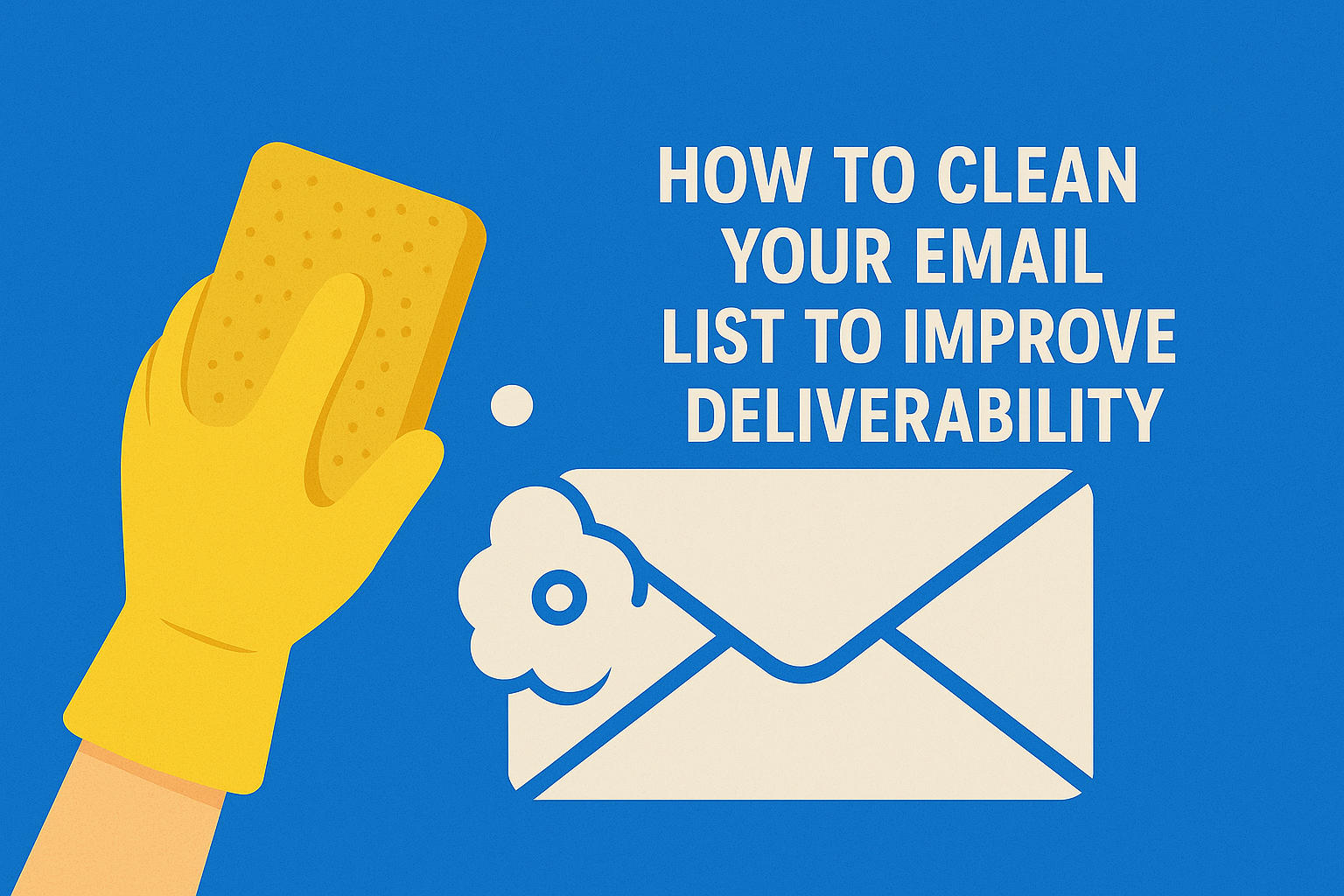If your emails are not getting opened, or worse, landing in spam, the first thing to check is your email list. A messy list will kill your deliverability faster than almost anything else. The good news is, cleaning your list is simple, and it pays off immediately.
Below I explain why list hygiene matters, what to remove, and a practical cleanup process you can run through in a day or two.
Why list cleaning actually matters?
Think about it this way, email providers watch how recipients react to messages. If lots of your emails bounce, or people never open them, providers get suspicious. They may start sending your next campaigns to spam. That harms future sends even if your content is great.
Cleaning the list reduces hard bounces, lowers complaint rates, and improves engagement metrics. All of that makes Internet Service Providers more likely to let your emails into the inbox. Simple cause and effect, no mystery.
What to remove from your list, right away?
You do not need to overthink this. Start with these categories.
- Hard bounces
Addresses that have bounced before, or bounced recently. Remove them immediately. - Role accounts (if irrelevant)
Addresses like admin@, info@, support@. These often forward or get ignored. If your campaign is not aimed at roles, drop them. - Duplicate addresses
Keep one record per email. Duplicates skew metrics and can cause multiple bounces. - Obvious typos
Addresses missing an @ sign, with obvious domain errors (for example, gmaill.com), or nonsensical strings. Fix or remove. - Inactive subscribers
People who have not opened any email in the last 12 to 18 months. You can try a re-engagement series first, but if they stay inactive, remove them. - Complaints and unsubscribes
If someone unsubscribed, respect it and remove them. If they complained, remove them immediately.
A quick, practical cleanup process
You can do most of this in a day, depending on list size.
- Export and backup
Export your list and keep a backup before making bulk deletions. This is simple insurance. - Run an email validation pass
Use a reputable Email Validation Service to find invalid, disposable, or risky addresses. These tools flag hard bounces and many common typos. - Remove obvious junk
Delete hard bounces, duplicates, and clearly invalid entries flagged by your validation tool. - Segment inactive users
Create a segment for users with zero opens in the last 12 months. Send a one-time re-engagement email, subject line short and direct, for example: “Quick check, still want these emails?” Give them a week. Remove anyone who does not respond or engage. - Check role accounts
Decide if role addresses are useful. If not, remove them. If they are, verify they are monitored. - Implement double opt in for new signups
This prevents mistyped and fake addresses from entering your list in the future. - Monitor and repeat
Clean your list every 90 days if you send regularly. If you send less often, adjust accordingly.
Metrics to watch after cleanup
After you clean, keep an eye on these numbers for the next few campaigns.
- Bounce rate – should drop significantly if cleanup worked. Aim for under 1 percent.
- Open rate – should improve because you removed non-openers and bad addresses.
- Complaint rate – should go down, as complainers are removed.
- Deliverability or inbox placement – if you track this, you should see steady improvement.
If bounces or complaints remain high, dig back into the list and consider a stricter validation threshold.
One important note about new accounts and initial sending
Cleaning helps a lot, but new sending domains or new mail servers still need careful handling during the first sends. If you have a fresh domain, or a domain that has been idle or you want to generate positive interactions, do not jump straight into large campaigns. Use a controlled initial sending process to build trust with ISPs.
If you prefer not to manage this yourself, a managed Email Warmup Service can run the initial sending safely for you, generate natural engagement, and provide reports so you know when to scale. It removes the guesswork and reduces risk, especially after a big cleanup.
Final, practical tip
Cleaning your list is not glamorous, but it is one of the single best things you can do for deliverability. Do it, then do it again regularly. Your future campaigns will thank you, with better inbox placement and more real engagement.
Advertisement:

